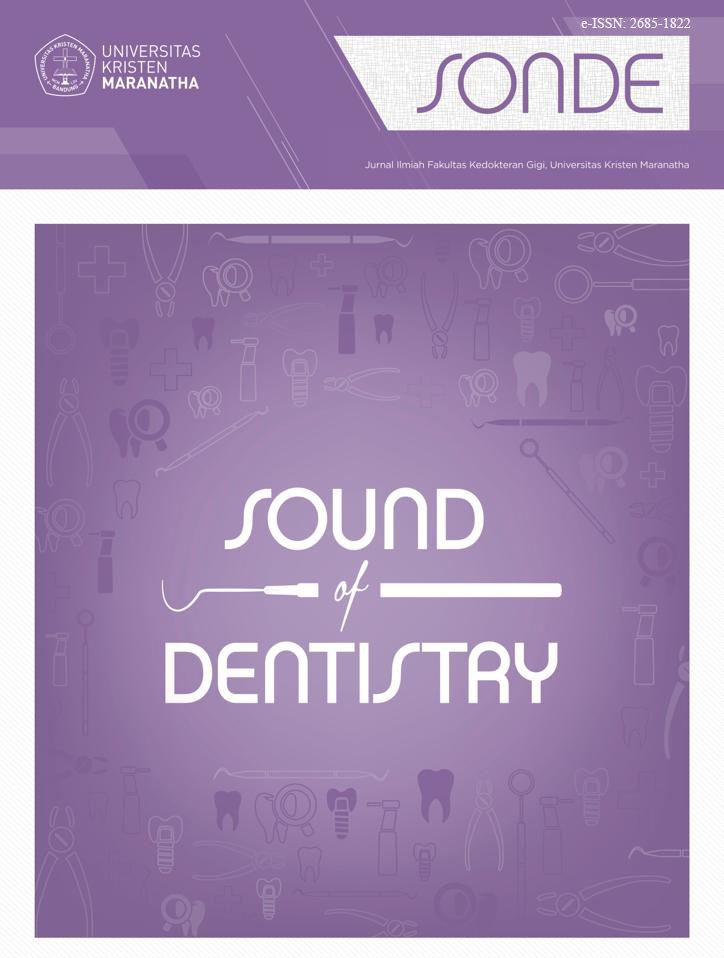Comparison of Antibacterial Effects of 0,1% and 0,3% Chlorine Dioxide Solutions Against Enterococcus Faecalis
DOI:
https://doi.org/10.28932/sod.v8i1.9776Keywords:
antibacterial, chlorine dioxide, Enterococcus faecalis, inhibitory power, sodium hypochloriteAbstract
Background: Chlorine dioxide is a broad-spectrum antibacterial agent that operates on the same principle as sodium hypochlorite, oxidizing bacterial cells and leading to cell death. Unlike sodium hypochlorite, which is toxic to periradicular tissues, chlorine dioxide is considered more biocompatible and has no toxic effects on humans up to a concentration of 3000 ppm (0.3%). The concentration of 0.1% is commonly used in commercial mouthwashes, while 0.3% represents the highest non-toxic concentration of chlorine dioxide. Objective: This study aims to determine the comparative antibacterial effects of chlorine dioxide at concentrations of 0.1% and 0.3% on the growth of Enterococcus faecalis. Methods: This research is an in vitro experimental laboratory study. The test groups used chlorine dioxide concentrations of 0.1% and 0.3%, sodium hypochlorite 2.5% as a positive control, and aquades as a negative control. The antibacterial efficacy of chlorine dioxide was tested against Enterococcus faecalis using the disc diffusion method to determine the zone of inhibition. The results of the zone of inhibition measurements were then analyzed statistically using one-way ANOVA and Post Hoc tests. Results: This study revealed that chlorine dioxide at 0.3% has a larger mean zone of inhibition than chlorine dioxide at 0.1%, although it is still lower than sodium hypochlorite at 2.5%. Conclusion:Chlorine dioxide at a concentration of 0.3% exhibits a higher antibacterial effect than chlorine dioxide at 0.1% against Enterococcus faecalis.Downloads
Download data is not yet available.
Downloads
Published
2024-09-30
Issue
Section
Articles










